octanejunkie said:The motor in my truck, in my sig, is running around 9.2 SCR, 8.2 DCR; average deck height is .027, current head gasket is a felpro marine (thick) gasket
https://www.uempistons.com/index.php?main_page=calculators&zenid=04775c8ecd16109faea2023a1691b551
If I put .015 coated shim gaskets on instead I could get close to .042 quench - would this make me more detonation prone?It would raise my CR across the board... 9.8 SCR and 8.6 DCR
Well, without my knowledge, my shop installed SpeedPro 423NCP pistons, pin height is .020 higher making the compression height 1.540 vs. 1.560 - so to avoid a .015 gasket, I'd have to change my pistons.

In addition to that, my average deck height is .027, meaning some pistons are .024 and some are .030 in the hole, the deepest one is .032 - either my deck is warped (not likely since it was cleaned up) or the rods are not even, most likely.
If I really want to get this motor right, it looks like I need to rebuild it, but truthfully, it runs OK and I was just considering the thin gasket to gain quench easy and cheap if and when I swap cams
I'd like to set the quench and choose the best cam for my driving style, what I have now is OK, I just don't think it is as good as it can be.
My biggest issue right now is poor fuel economy/mpg, at best, I get just under 14 mpg with mostly highway driving, just under 12 mpg in the city.
I can swap gaskets anytime I want to tear the top end down.
The FelPro 1094, 0.015 gasket, is $23 each: http://www.summitracing.com/parts/fel-1094
The GM intake gasket is $48 a pair: http://www.summitracing.com/parts/nal-89017465
A can of K&W Copper Coat is $15: http://www.summitracing.com/parts/sce-g1612
The biggest pain will be waiting for the silicone on the intake manifold to dry before I can start it up!
Like others have said, raising quench raises both SCR and DCR, and that may not be worth the benefit of optimal quench; especially with only 2 cylinders close to yielding 0.039-0.040 quench after the effort.
Cylinder Pressure Note: youll generally want to try hard to maximize the useable compression as the higher the compression before you get into detonation the more efficiently the fuel can be burnt and the more torque the engine can produce, if limited to pump high test 92-93 octane fuel, 165 psi # of cylinder pressure is about the best cylinder pressure for Iron heads with 92-93 octane, using pure un-ethanol laced fuel, gasoline. while the faster heat transfer rate of aluminum cylinder heads will usually allow 190psi # as the upper limit or best for aluminum heads.
My piston to deck clearances are:
Cyl #1 - 0.028 in the hole
Cyl #2 - 0.032 in the hole
Cyl #3 - 0.027 in the hole
Cyl #4 - 0.025 in the hole
Cyl #5 - 0.030 in the hole
Cyl #6 - 0.030 in the hole
Cyl #7 - 0.024 in the hole (gotta figure everything around the tallest piston)
Cyl #8 - 0.025 in the hole
The quest for quench will also net me a much higher DCR - which probably negates the entire exercise... so what say ye?
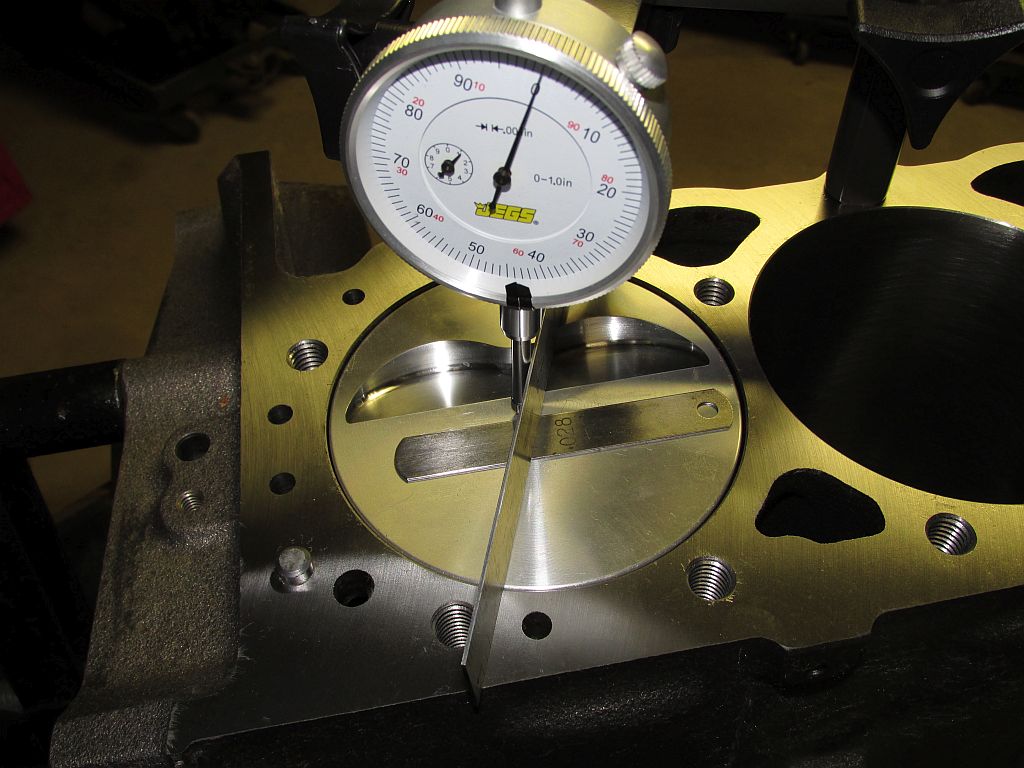
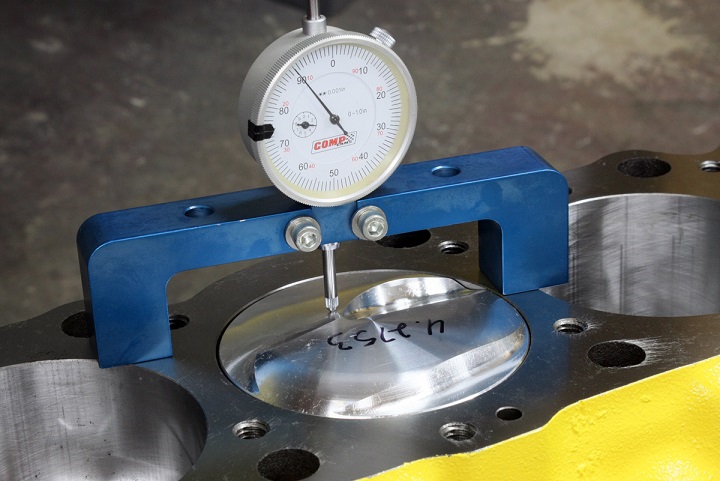
it should be rather obvious that youll need to know the exact distance the piston deck sits at TDC ,above or below the block deck surface and the valve notch recess or pop-up dome volume of the piston to do accurate quench or compression calculations
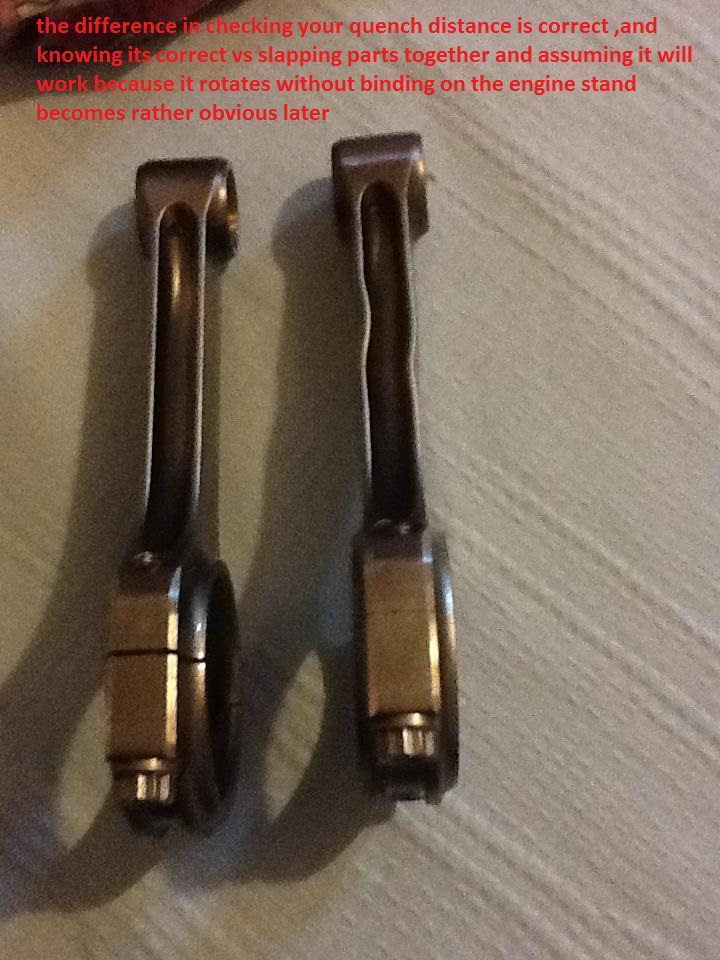
head gaskets are rarely completely round, nore are combustion chambers
you,ll want to place a head gasket you,ll use on the heads and mark the area inside the opening as the only areas you can change,
(notice the gasket fire ring is NOT a perfect circle like many people assume)
ideally you,ll want to un-shroud the valves while opening up the combustion chamber volume, but not extend the combustion chamber past the front edge of the gasket fire ring as that usually causes gasket failure
http://garage.grumpysperformance.com/index.php?threads/ccing-my-heads.14187/
http://garage.grumpysperformance.com/index.php?threads/iron-vs-aluminum-heads.389/#post-31684
http://garage.grumpysperformance.co...r-piston-dome-or-port-volume.2077/#post-60554

laying a head gasket on the head and use machinist blue dye to show the areas inside the gasket fire-ring
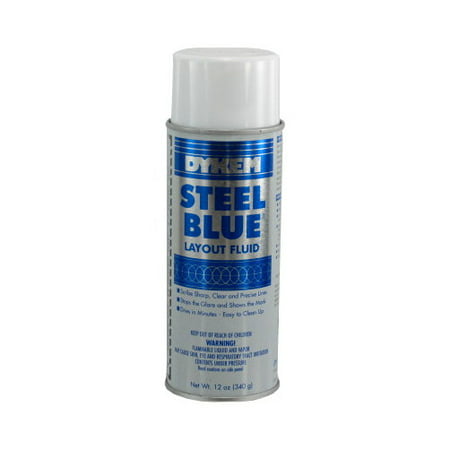
http://www.skygeek.com/dymon-8000-s...MI8vPS24jm1gIVBolpCh2pnAoWEAQYAiABEgL2ZPD_BwE
thus the first logical step would be to carefully place a identical head gasket to what you'll use on the engine , properly lined up on the cylinder head and accurately scribe its inside dimensional limits on the cylinder head, a metal scribe , a dremel tool and machinist blue would be helpful here
keep in mind its one of several factors working together, things like getting the quench correct, polishing and un-shrouding the combustion chamber, getting the ignition advance curve and fuel/air ratio correctly matched and taking the time to polish the piston, dome, removing sharp edges from valve clearance notches , and polishing and very slightly rounding sharp edges on the valves, use of the correct spark plug heat range, removing exposed threads in the combustion chamber after you test by inserting a correct spark plug, certainly helps reduce any potential hot spots.
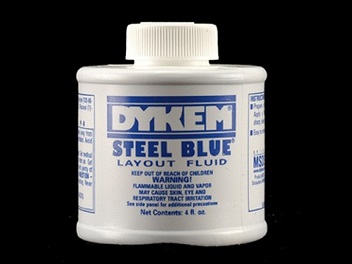
if you ever take the time to accurately measure G.M. production engines, its become rather obvious that G.M. production engineers don't consider QUENCH distance to be high on the list of assembly requirements.
the first thing Id suggest is doing an compression test to get some idea of actual cylinder pressures
it should be obvious that having the block deck milled (decked to be parallel and square to the crank center-line is critical to maintaining the deck height measurements, as is having a quality crank assembly with accurately ground journals.
piston to valve clearance IS critical, maintaining lubrication, flow for durability is critical, and while building in proper quench is very helpful, at reducing the tendency for an engine to detonate the lower compression ratios, currently being used with todays lower octane fuel, computer controls on ignition advance curves, use of knock sensors,coolant heat and oil temp sensors and maintaining a consistent 14.7:1 fuel/air ratio to maximize mileage and reduce emissions and seems to be in many case how the engineers have selected to deal with detonation.
polished combustion chamber surfaces reduce the tendency to detonate,there is always some variation in the individual connecting rod length,crank throws, and piston pin heights, this is one reason I vastly prefer the use of free floating piston pins as it allows very easy swapping and test fitting of connecting rods and pistons, thus a slightly shorter connecting rod can be matched with a taller piston pin height and a longer rod with a shorter pin height piston, the differences may be only a few thousands of an inch but careful measuring and test fitting allows you to make the average variation between cylinders minimalcommon BB CHEVY piston compression heights are
1.270"
1.395"
1.520"
1.645"
1.765"
remember the blocks deck height, minus the piston pin height minus 1/2 the crank stroke will equal the required connecting rod length
OR
the blocks deck height, minus the connecting rod length, minus 1/2 the crank stroke. will equal the required piston pin height
yes its common for a combo to have the piston deck height located .010-.015 above or below the deck of the block so you'll need to select a head gasket thickness that compensates, too allow your engine to get a .038-.044 piston deck to cylinder head QUENCH DISTANCE.
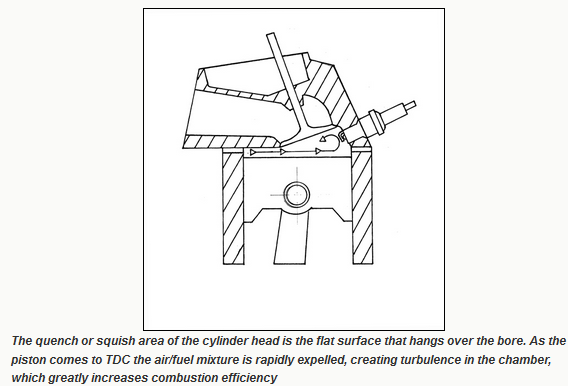
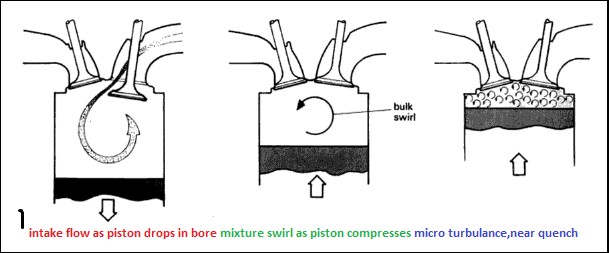
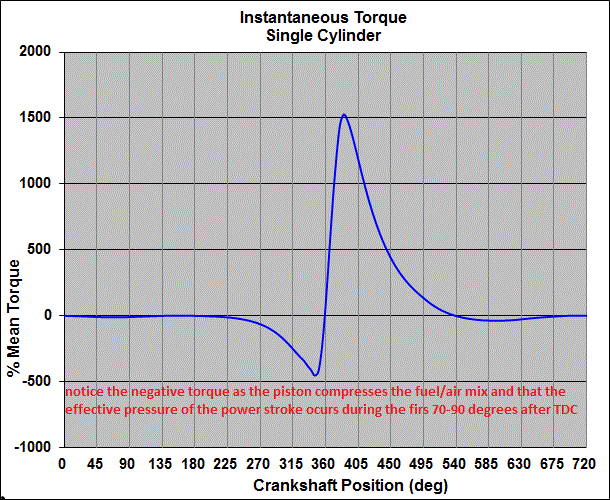
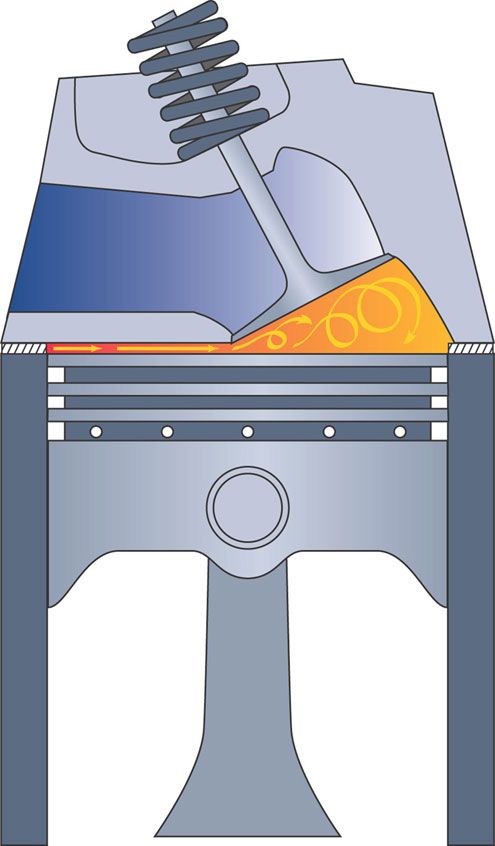
polishing the combustion chambers and smoothing contours tends to reduce detonation and improve power

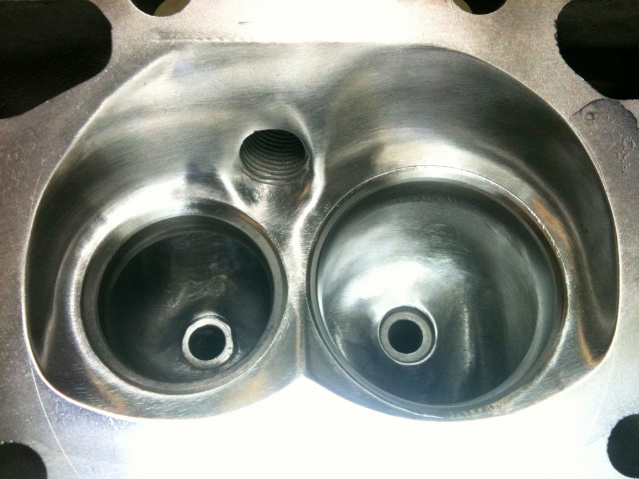
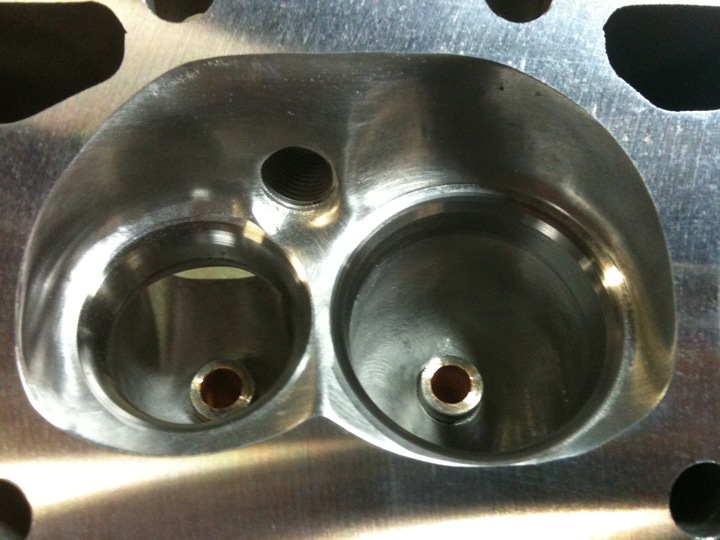
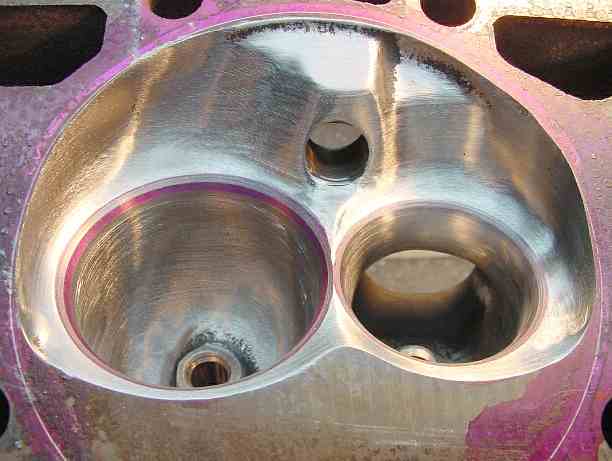
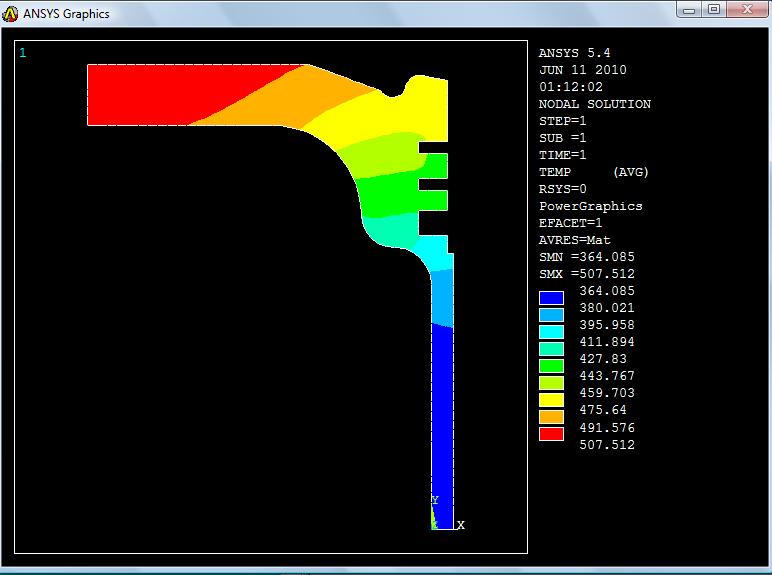
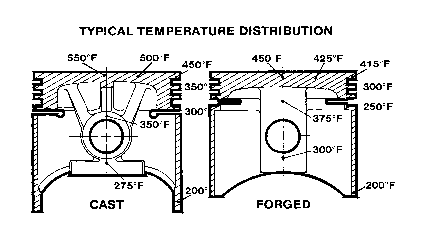
Mahle pistons are designed for specific applications with the alloy that is best suited for that particular application.
but keep in mind the better versions of forged pistons tend to have the advantage in both strength and heat tolerances
......................Piston Alloy Comparison
4032...................................................... 2618
High silicon............................................No silicon
Low expansion........................................expansion
Tighter piston-to-wall clearance................More Piston-to-wall clearance needed
Quiet Operation......................................Noise when cold
Less ductile............................................More ductile
More stable & consistent.........................Higher resistance to detonation
Longer life cycles....................................Shorter life cycles
Harder...................................................Softer
related info
http://garage.grumpysperformance.co...-octane-for-compression-ratio.2718/#post-7057
READ THROUGH THIS LINK
http://garage.grumpysperformance.com/index.php?threads/finding-a-machine-shop.321/
viewtopic.php?f=52&t=399
viewtopic.php?f=53&t=5064&p=35026&hilit=piston+height#p35026
viewtopic.php?f=53&t=3760&p=9968&hilit=clearances+skirt#p9968
viewtopic.php?f=53&t=509&p=12277&hilit=deck+level#p12277
viewtopic.php?f=52&t=1489
viewtopic.php?f=55&t=2718&p=35581&hilit=polish+combustion#p35581
viewtopic.php?f=52&t=727&p=32136&hilit=detonation#p32136
viewtopic.php?f=50&t=499&p=617&hilit=quench#p617
viewtopic.php?f=52&t=3143&p=8387&hilit=+polish+chamber#p8387
viewtopic.php?f=52&t=2630&p=6788&hilit=+shrouding#p6788
viewtopic.php?f=51&t=10925&p=47970&hilit=quench#p47970
viewtopic.php?f=70&t=9252&p=33366&hilit=polish+combustion#p33366
Last edited by a moderator:
